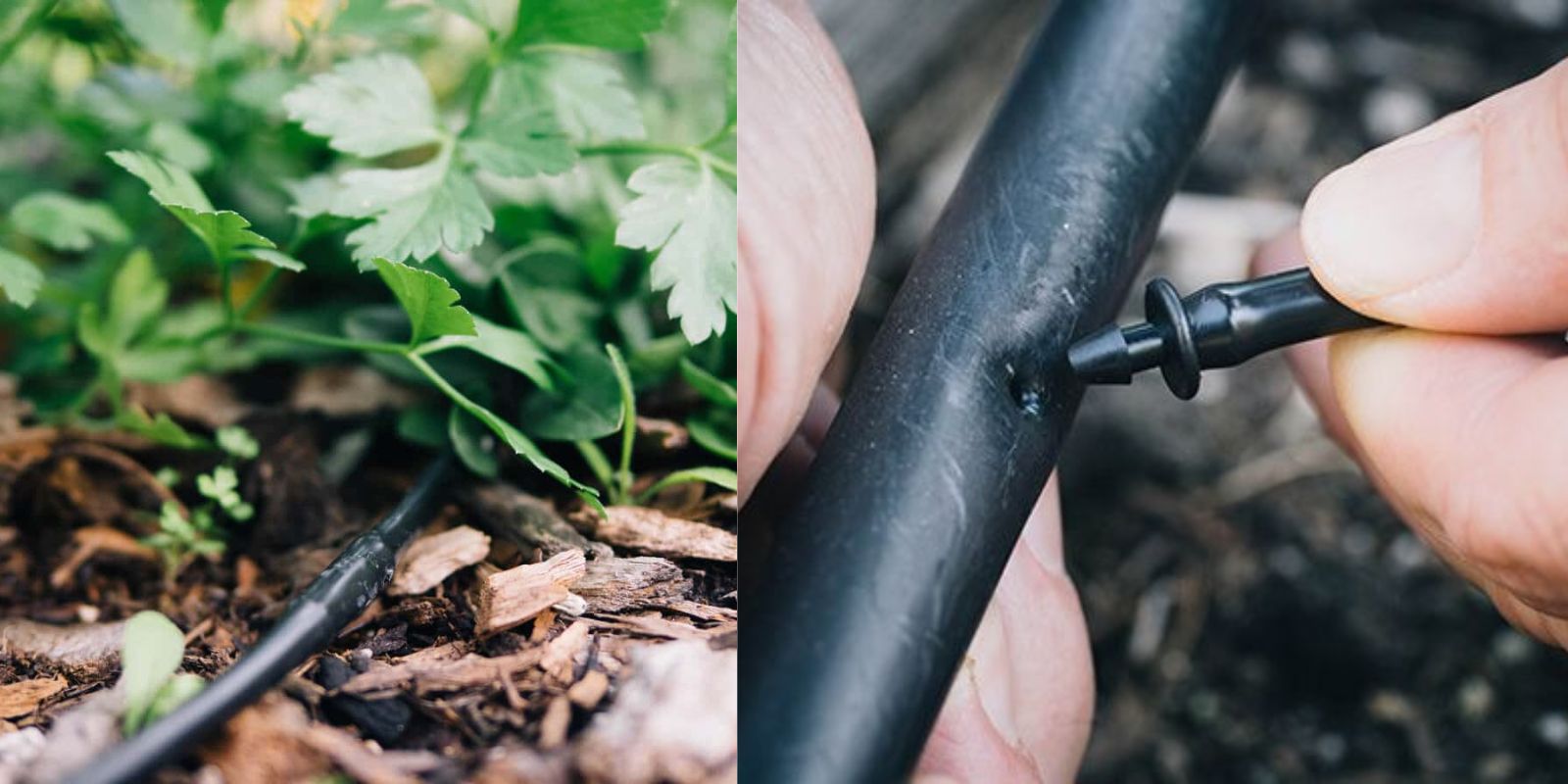Efficient watering is the cornerstone of a thriving garden. One of the most effective methods to ensure your plants receive consistent moisture is by using a drip irrigation system. Unlike traditional watering methods that can lead to water wastage and uneven distribution, drip irrigation provides targeted watering directly to the plant roots. This article will guide you through the steps of assembling and installing a drip irrigation system, helping you optimize your garden’s water use and support healthy plant growth.
Introduction
Drip irrigation is a revolutionary watering method that delivers water directly to the plant roots through a network of tubing, emitters, and connectors. This system minimizes evaporation and runoff, making it an ideal choice for conserving water and ensuring that each plant receives the precise amount of moisture it needs. Whether you’re new to gardening or looking to upgrade your current setup, this guide will help you understand how to design, assemble, and install a drip irrigation system tailored to your garden’s needs.
Benefits of Drip Irrigation
Before diving into the setup process, it’s essential to understand the benefits of drip irrigation:
- Water Efficiency: Drip systems deliver water directly to the plant’s root zone, reducing water waste and evaporation.
- Consistent Moisture: Provides a steady supply of water, promoting healthy plant growth and reducing the risk of over- or under-watering.
- Reduced Weed Growth: By watering only the plants, drip irrigation minimizes weed growth in non-planted areas.
- Saves Time: Automates the watering process, freeing up time for other gardening tasks.
Step-by-Step Guide to Assembling and Installing Your Drip Irrigation System
Step 1: Plan Your System
1. Assess Your Garden Layout:
- Measure Your Garden: Determine the size and shape of your garden to plan the layout of your drip irrigation system.
- Identify Plant Types: Different plants have different water needs, so group plants with similar requirements together.
- Decide on Water Source: Identify where you’ll connect your drip system to your water source, such as a garden faucet or hose.
2. Design the System:
- Main Line: Plan the main drip tubing that will carry water from the source to different parts of the garden.
- Emitters: Decide on the type and placement of emitters to ensure adequate water distribution to each plant.
- Drip Zones: Divide your garden into zones if needed, especially for larger areas or different plant types with varying water needs.
Step 2: Gather Materials
Essential Materials:
- Drip Tubing: Main and lateral tubing to transport water.
- Emitters: Devices that release water at a controlled rate.
- Connectors: Fittings to join tubing sections and create a customized layout.
- Filter: To prevent debris from clogging the emitters.
- Stakes: To secure the tubing and keep it in place.
- Pressure Regulator: To control water pressure and ensure consistent flow.
Tools Needed:
- Tubing Cutter: For cutting the drip tubing to the desired length.
- Hole Punch: To create holes in the tubing for emitter installation.
- Teflon Tape: For sealing connections and preventing leaks.
Step 3: Assemble the Tubing
1. Cut and Connect the Main Line:
- Measure and Cut Tubing: Use a tubing cutter to cut the main drip line to the required length.
- Attach to Water Source: Connect one end of the main line to your water source using the appropriate connector.
2. Lay Out Lateral Tubing:
- Install Lateral Lines: Cut additional tubing to create lateral lines that extend from the main line to different areas of your garden.
- Secure Tubing: Use stakes to hold the tubing in place along the garden beds.
Step 4: Install Emitters
1. Determine Emitter Placement:
- Spacing: Place emitters according to the water needs of each plant. For plants with high water requirements, use more emitters or higher flow rates.
2. Insert Emitters:
- Create Holes: Use a hole punch to make holes in the tubing where you want to install the emitters.
- Install Emitters: Push the emitters into the holes, ensuring they are securely fitted.
3. Test and Adjust:
- Turn On the System: Activate the water supply and check for leaks or uneven water distribution.
- Adjust Emitters: Modify the flow rate or placement of emitters if needed to achieve uniform watering.
Step 5: Test the System
1. Check for Leaks:
- Inspect Connections: Look for any leaks at the connections between tubing and emitters. Use Teflon tape or tighten fittings if necessary.
- Monitor Water Flow: Ensure that water is flowing correctly through each emitter and adjust as needed.
2. Adjust Watering Schedule:
- Set Timers: If using a timer, set it according to the needs of your plants and the local climate.
- Monitor Plant Health: Observe your plants to ensure they are receiving adequate moisture and make adjustments to the system as needed.
Maintenance and Troubleshooting
1. Regular Maintenance:
- Clean Filters: Check and clean the filter regularly to prevent clogging.
- Inspect Tubing: Look for any signs of damage or leaks and replace parts as needed.
- Monitor Emitters: Ensure emitters are functioning correctly and adjust flow rates if necessary.
2. Common Issues:
- Clogged Emitters: Clean emitters if they become clogged with debris.
- Uneven Watering: Adjust emitter placement or flow rates to achieve uniform watering.
- Leaks: Check connections and tubing for leaks and repair as needed.
Conclusion
A well-designed and properly installed drip irrigation system can transform your gardening experience, providing efficient, consistent, and targeted watering for your plants. By following these steps and incorporating regular maintenance, you can ensure that your garden remains healthy and productive with minimal effort. Enjoy the benefits of a flourishing garden and take pride in your successful irrigation system.
Ready to revolutionize your gardening routine? Start assembling your drip irrigation system today and watch your plants thrive with less effort! 🌿💧 #DripIrrigation #GardenEfficiency #SmartWatering #GreenThumb #HomeGardening #PlantCare #EfficientWatering #GardeningTips #SustainableLiving #GardenHacks

